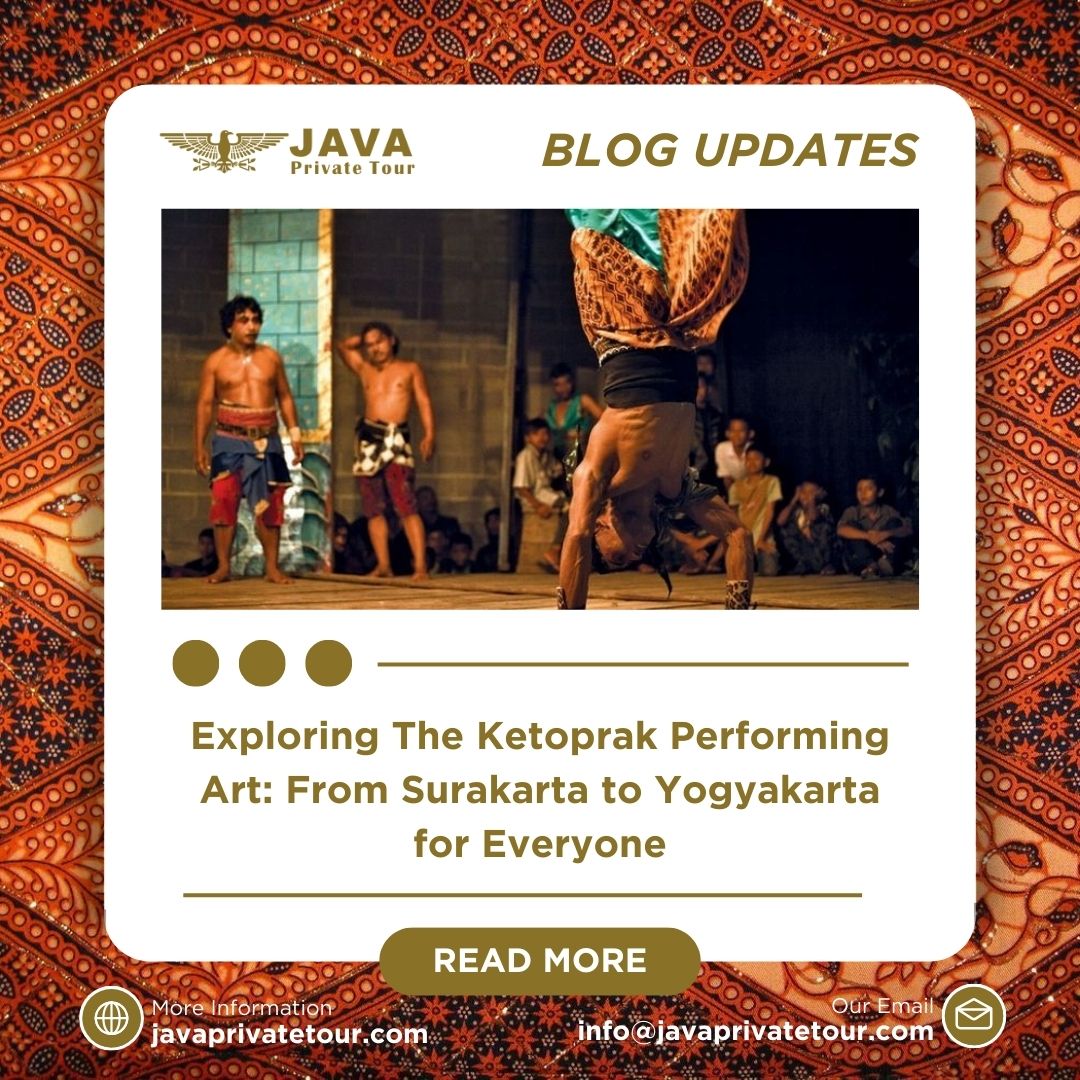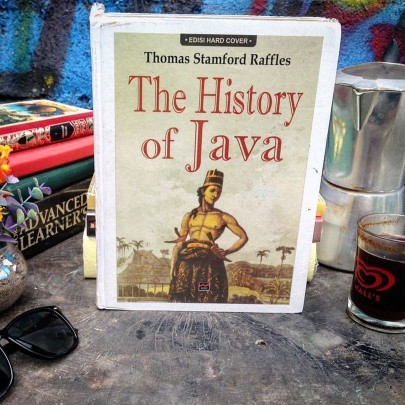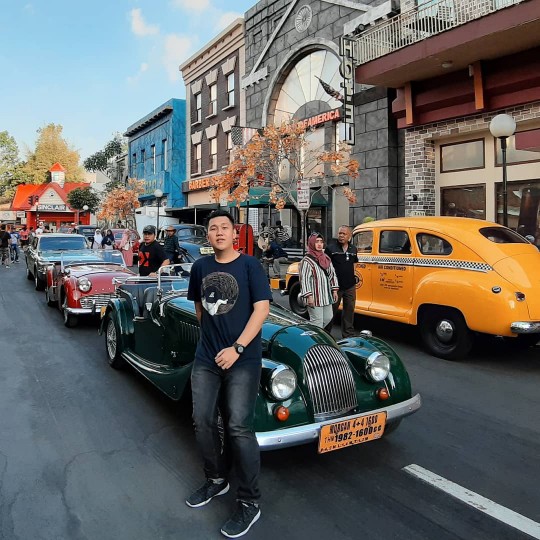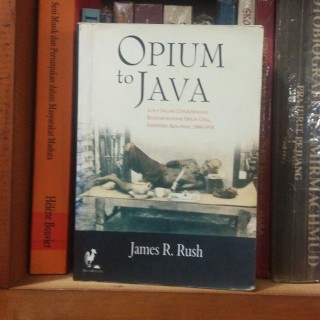javaprivatetour.com – Hey there, wanderers and culture enthusiasts! Today, let’s dive into the vibrant world of Ketoprak, a traditional Javanese performing art that has traversed from its roots in Surakarta to its flourishing presence in Yogyakarta. But before we embark on this cultural journey, let’s rewind a bit.
Born in Solo [Surakarta] but bloomed in Mataram,” shared Trisno Santoso, fondly known as Pelok. This 55-year-old gentleman is a lecturer at the Indonesian Institute of the Arts Surakarta, Faculty of Performing Arts, Department of Pedhalangan Arts. Almost every month, he graces the stage at various theater and Ketoprak gatherings managed by young artists.
The journey of Ketoprak has been long and rocky. Despite originating in Surakarta in the early 20th century through Ketoprak lesung, it eventually shifted its base to Yogyakarta. It seemed that at the time, Wayang Orang (Javanese traditional theatre) was more prevalent compared to Ketoprak. As a result, Ketoprak found itself on the outskirts, as the city folks preferred Wayang Orang.

A Ketoprak player has just finished applying makeup. That evening, he plays the role of a warok depicted as strong-bodied with chest hair, a mustache, and thick beard. His Ketoprak troupe performs in Wado, on the outskirts of Blora.
“Ketoprak was considered the art of the common people,” Pelok expressed, reflecting on the perception of Ketoprak in the early 20th century. “But Wayang Orang was the art of the elite.”
Barbara Hatley, an Emeritus Professor from the University of Tasmania, Australia, documented the evolution of Ketoprak in “Javanese Performances on An Indonesian Stage.” According to Hatley, in 1925, Ketoprak troupes like Krida Madya Utama from Surakarta toured Klaten and Prambanan, finally performing in Dusun Demangan, Yogyakarta.
Over the following weeks, many Ketoprak troupes emerged and received a warm welcome on the outskirts of the Yogyakarta Sultanate. Ketoprak eventually found its way into the homes of the Sultan’s families.
“Developing in Mataram doesn’t mean they immediately adopted the Mataram srepeg [opening gamelan],” Pelok explained. “They still used lesung as well.” In Yogyakarta, Ketoprak experienced rapid growth, extending its reach to East Java and the north coast of Java. “It still strongly resonates with Yogyakarta!”
Ketoprak no longer belonged exclusively to the Surakarta or Yogyakarta Sultanates—though they were initially the embryo of Ketoprak. Now, Ketoprak is a heritage of the Javanese people. So, it’s not surprising to see Ketoprak performances in Taman Balekambang, Surakarta, predominantly featuring Mataram-style music and attire.

“Ketoprak performances still captivate audiences,” Pelok remarked. “But monetizing it seems challenging.” Ketoprak as a standalone commercial performing art still faces difficulties without sponsors. However, Ketoprak troupes can sustain themselves by being invited to various ceremonial events.
Nevertheless, Pelok sees this indigenous art form enduring. He witnessed a Ketoprak group in Surakarta that had been dormant for a while, but upon resuming performances recently, the audience returned.
This indicates that there’s still a significant interest in this performing art. “I remain optimistic,” Pelok concluded. “Ketoprak will undoubtedly endure, regardless of its future form.”
Now, let’s tie this cultural exploration back to our journey plans. If you’re a foreign tourist planning your first trip to Java, Indonesia, consider Java Private Tour as your trusted guide. With certified local guides who are fluent in English, flexible schedules tailored to your preferences, and a range of private transportation options from sedans to tourist buses, Java Private Tour ensures a seamless exploration experience. Plus, endorsed by several embassies from satisfied clients, Java Private Tour is your reliable companion. So, for all you adventurous souls out there, let Java Private Tour be your compass to the rich cultural tapestry of Java. You can simply BOOK HERE to start your journey. Happy exploring!
You May Also Like
 Exploring the Charms of Pentingsari Village – A Hidden Gem in Yogyakarta
Exploring the Charms of Pentingsari Village – A Hidden Gem in Yogyakarta
 Hidden Gems of Magelang: Exploring the Skilled Hands of Mungkid’s Artisans
Hidden Gems of Magelang: Exploring the Skilled Hands of Mungkid’s Artisans
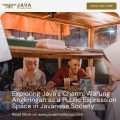 Exploring Java’s Charm: Warung Angkringan as a Public Expression Space in Javanese Society
Exploring Java’s Charm: Warung Angkringan as a Public Expression Space in Javanese Society
 Private Cycling Tour Exploring Every Corner Of The Village in Yogyakarta
Private Cycling Tour Exploring Every Corner Of The Village in Yogyakarta
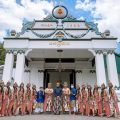 Exploring the Cultural Treasure Trove, Museum Keraton Yogyakarta
Exploring the Cultural Treasure Trove, Museum Keraton Yogyakarta

